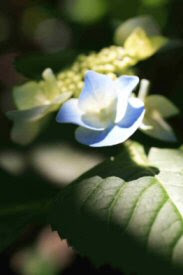Although I admit that vegetables have their place in this world, and even that I enjoy the taste of a few of them, it’s the fruit group that inevitably catches my eye. Unlike the typical state-side supermarket, the Japanese grocer is concerned with the freshness and quality of his or her produce. My opinion of the current USA fruit industry (mass growth, mass chemicals, mass transportation, for sale two months before anything is actually ripe) has long been jaded by one-too-many deceitful peaches (the ones that look appealing but end up leaving you with a mouthful of pulp the taste and consistency of soggy cardboard), but the Japanese have restored my faith in the possible production of quality produce at decent prices.
Pricing is of course relative to your location. Paying the equivalent of $1.00 per piece of fruit (different than per pound) probably seems pricey to those of us who are used to the King Soopers & Walmarts of the world. But, when compared to the 1000 yen
This Japanese fanaticism for quality produce *can* go to an unreasonable extreme. Not only are they concerned with quality and freshness, but with appearance as well. Case in point- produce with cosmetic blemishes (taste intact) are often discounted considerably. Simply no one will buy the misshapen strawberry because it does not appeal to the eye as well as the taste buds… well, no one but one of four resident foreigners who’s perfectly content to slice said strawberry and close her eyes while savoring the taste. This doesn’t happen often however- vendors do their best not to buy the cosmetically-challenged fruit in the first place.
As the seasons change, so does the selection, with the most reasonably priced pieces being the fruits naturally in-season. The coming of fall has brought out the best of Asian pears, persimmons, and apples. While a part of me wishes some fruits were available year-round, I can’t say I’m too disappointed by their seasonal replacements. I’ve been encouraged to try something new (I can’t remember the last time I had a persimmon) and, out of necessity, change up our weekly menu to take advantage of the seasonal stock. It’s been a good way to practice the ever useful tool of “flexibility”, a blatant survival technique whenever one moves away from familiar surroundings.
It’s only a matter of time before winter starts knocking at our door. I wonder if the produce shops will close down and if fresh fruit & veggies will disappear from the markets until spring arrives. Larger supermarkets will probably charge an arm and a leg for the imported produce they’ll inevitably stock. Trees, bushes and plants will slumber underneath a blanket of white across the land…
Oh well, canned fruit isn’t *so* bad.

1 comment:
What are these "vile green stringy beans" of which you speak?
The only green beans I know of are tender, delectable and nutritious :)
Post a Comment